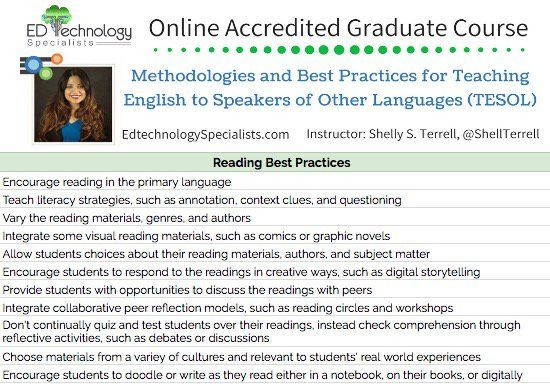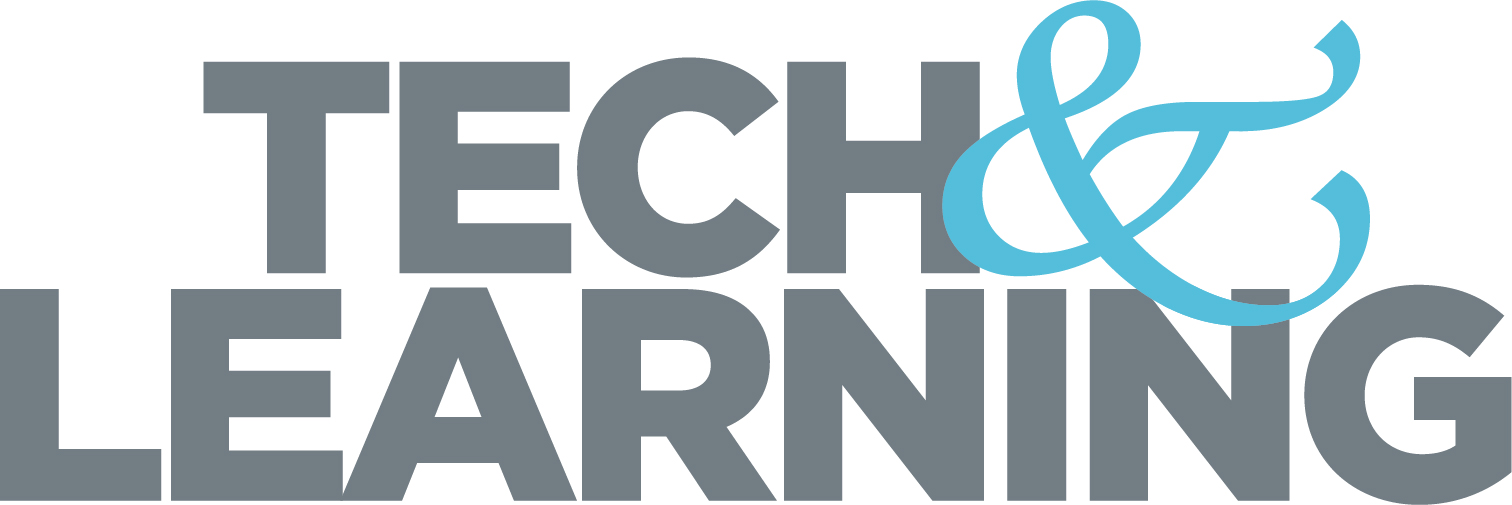Tips for Encouraging Learners of All Ages to Read

Today I was the guest moderator for #Edcontentchat thanks to Barbara Mascareno (@spanish4kiddos). The chat is only 30 minutes and we shared resources and ideas for encouraging learners to read. In case you missed the chat, I’ve included important ideas and resources shared during the chat. Congratulations to Jared Wall (@jwalledtech) who shared the idea to make read alouds more engaging. He received a free copy of my book, Learning to Go: Lesson Ideas for Teaching with Mobile Devices, Cell Phones and BYOT.
BEST PRACTICES FOR ENHANCING READING SKILLS
This is a chart of best practices for developing learners’ reading skills that I created for my upcoming online course, Methodologies for Teaching English to Speakers of Other Languages.
[STEAM Up Learning Outdoors! 15+ Ideas to Try Now or this Summer!]

MORE TIPS AND RESOURCES
Below are more tips and resources for encouraging reading:
- Introduce learners to the free Immersive Reader by Microsoft Learning Tools! This is such an incredible tool. It’s easy to use and helps language learners as well as students with dyslexia with features like reading aloud, a picture dictionary, identifying parts of speech, dyslexia friendly font, and more.
- Novel Effect is an amazing iOS app to use when reading popular children’s books or poetry. As you read the book aloud, the app uses voice recognition technology to add sound effects, character voices, and music made for the scene.
- 8 Ways to Annotate Readings, Websites and Online Articles with Examples
- Teaching Critical Reading Skills Resources and Presentation
- Ways to Get Students Engaged with Novels
- Critical Reading with Digital Devices! 18 Resources & Web Tools
- Tips for Amplifying Story Time
- Student choice is the key to encouraging reading! We shouldn’t dismiss what students choose to read, but rather introduce them to different types of reading materials, authors, genres, and media.
- Make different types of reading materials accessible and available to learners. Add a reading area where students can enjoy a variety of reading materials, such as magazines, comics, graphic novels, song lyrics, magazines, and audio books.
- Allow them to check out the materials. You can usually find free books at thrift stores or libraries or ask for donations from the community.
- Not all learners have the means to travel to a library, so make it easy for them to grab some materials.
- Allow them to check out the materials. You can usually find free books at thrift stores or libraries or ask for donations from the community.
- Not all learners have the means to travel to a library, so make it easy for them to grab some materials.
- Take them on field trips to the school or community library and help students get a library card. Show them how to check out books.
- English learners and their families might not be familiar with all the free services and resources offered by the community libraries.
- They may also not understand the process of checking out items.
- English learners and their families might not be familiar with all the free services and resources offered by the community libraries.
- They may also not understand the process of checking out items.
- It is also important to encourage reading in the native language. Research shows the more literate you are in your native language the more successful you will be in another language.
- Try add-ons and extensions to help struggling readers. Google Chrome has several you can read about here and here.
Tech & Learning Newsletter
Tools and ideas to transform education. Sign up below.











